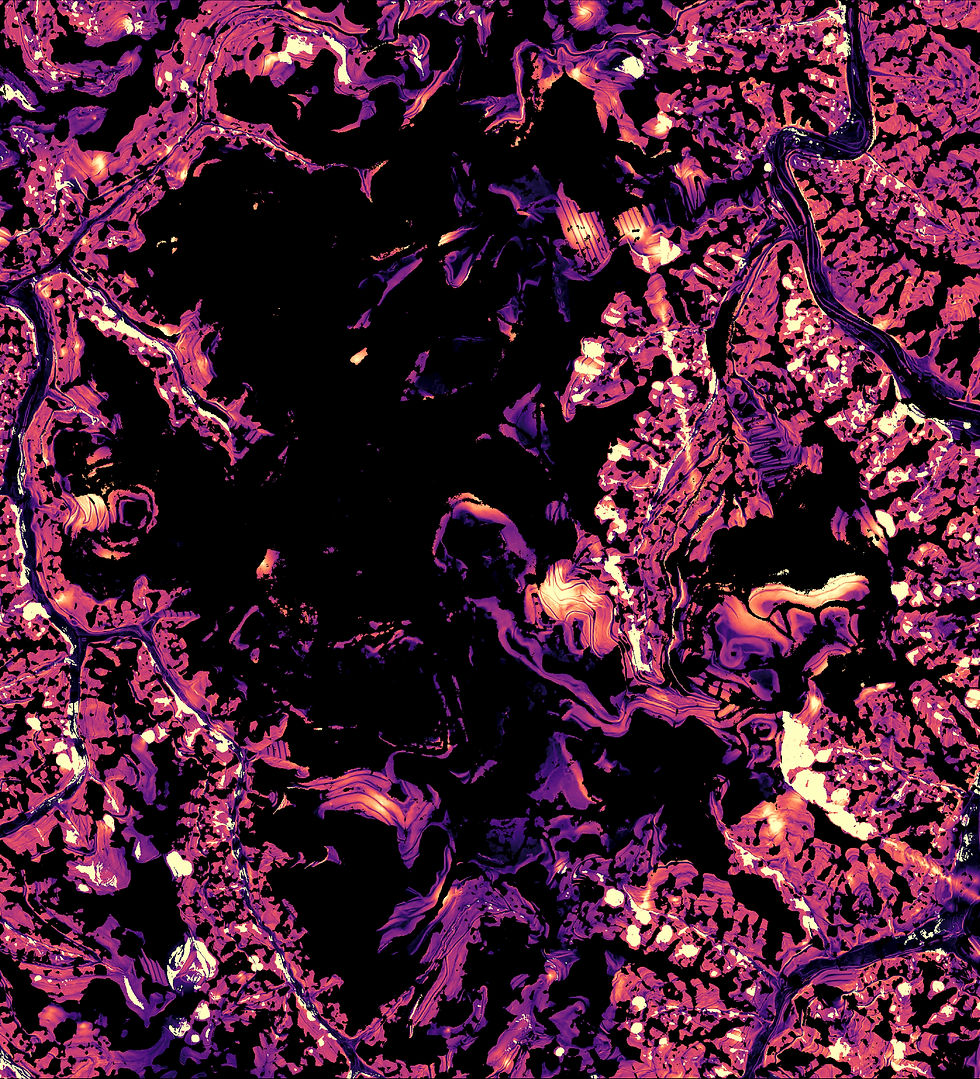Mapping Wildness




Simulating Post-Extraction Wildland Regeneration
Thesis Committee:
Advisor:
Terry Knight, PhD
Readers:
Cathryn Dwyre
Takehiko Nagakura, PhD
Abstract
This thesis introduces a novel approach to wildlife habitat classification for ecological regeneration. It is focused by the extreme environmental degradation of mountaintop removal (MTR) in the Appalachian Mountains, a violent coal extraction process that has significantly altered the landscape of this ecologically sensitive region. By integrating remote sensing and Geographic Information Systems (GIS) with machine learning, this research aims to develop a method that transcends traditional human egocentric landscape assessments, advocating for a model that foregrounds the habitats and needs of critically endangered species by simulating landscape regeneration and assessing topographical alterations in terms of how design decisions impact wildlife. Central to this study is the concept of Umwelt, the subjective experiences of nonhuman species, including how their spatial perception and spectrum are used to discern details within their environment. Umwelt broadens traditional spatial understanding by emphasizing that each species experiences the world through its sensory filters, which shape its interactions within their habitat. This understanding guides the research’s approach to approximating the Umwelt of the Cerulean Warbler (Setophaga cerulea), a surrogate species in this work, which has faced steep declines due to habitat loss in Appalachia. Through the development of a habitat suitability model that utilizes advanced computational tools and multispectral imagery, the thesis endeavors to offer a new perspective on environmental planning and conservation efforts - a computational approach to near-approximations of Umwelt. The methodological framework seeks not only to classify post-extraction landscapes for their potential in supporting wildlife but also to inform design and land use decisions that are sensitive to the temporal and complex processes of natural habitat regeneration. By challenging the prevailing paradigms of landscape restoration, which often lack consideration for the intricacies of wildland dynamics such as the multitudes of species interactions and interdependencies, this research proposes a new methodology that empowers wildlife to guide the ecological recovery process. The findings underscore the potential of applied GIS and machine learning in environmental advocacy, setting a precedent for future research and practice aimed at the regeneration of ecosystems that considers the ecological realities of all species involved.
Full paper will be released soon on DSpace at MIT Libraries.



















